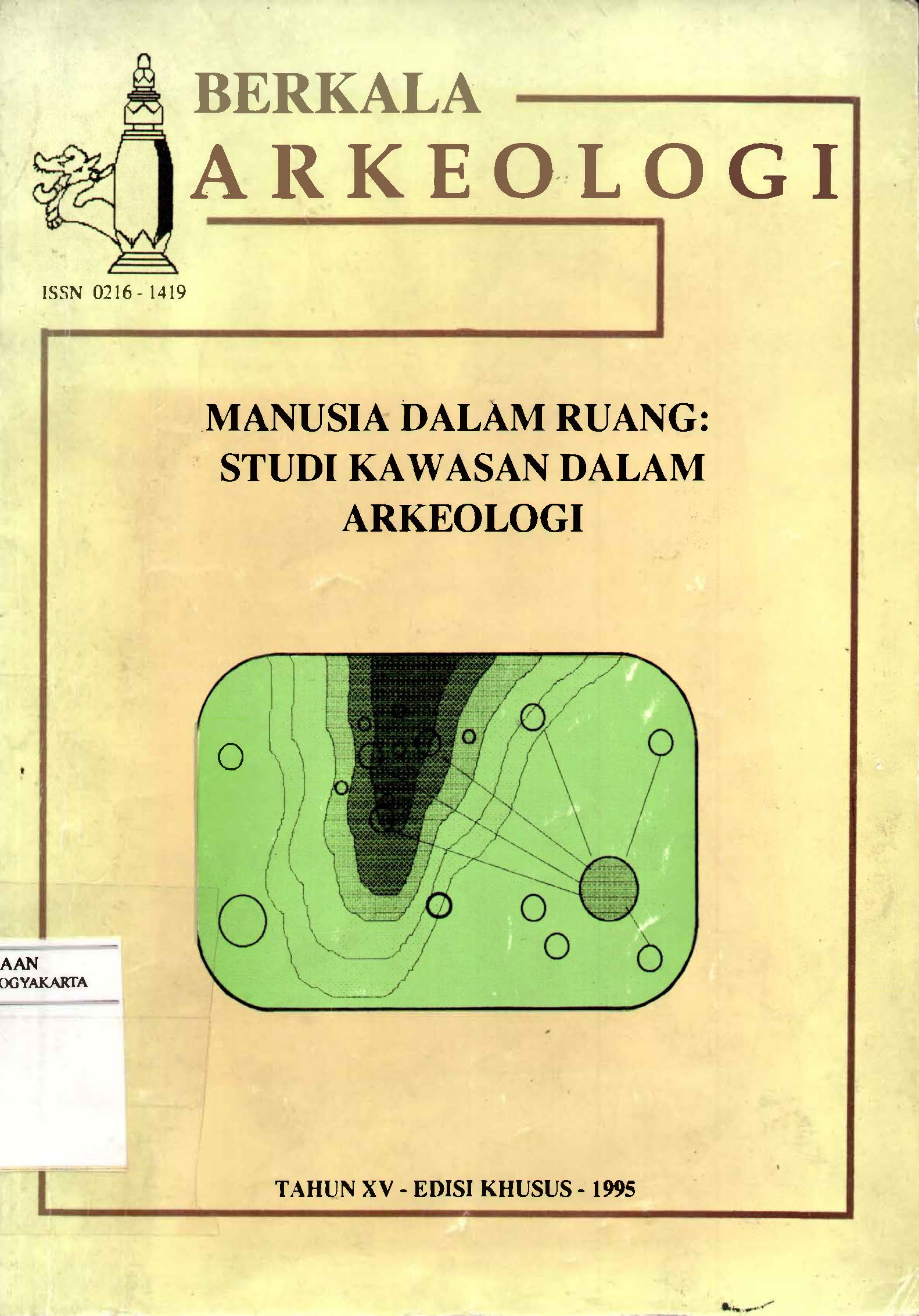KAJIAN KAWASAN: PENDEKATAN STRATEGIS DALAM PENELITIAN ARKEOLOGI DI INDONESIA DEWASA INI
Main Article Content
Abstract
If I or you as an individual will enter a meeting room, at the entrance you may think for a moment as you look left and right, which chair will you be sitting on. If you were a participant, and not an important official, you probably wouldn't choose a place in the front row of seats. You might choose to sit in a row of chairs a little back because there are already a number of your friends sitting there so you feel 'warm' and occasionally can steal the opportunity to greet a close friend who has not met for a long time. Or, long before entering the meeting room, you have decided in advance that you will sit in the second row so that you can focus more on hearing the presenters' descriptions without the interference of peers who they know will definitely invite them to chat outside of the subject matter in the session. Decision making to place ourselves in that space unit is influenced or determined by thoughts and feelings to socialize with friends or vice versa.
Article Details

This work is licensed under a Creative Commons Attribution-NonCommercial-ShareAlike 4.0 International License.
References
Willey, Gordon R. and Phillips, Phillip. Method and theory in American archaeology. Chicago : University of Chicago Press.
Dunnell, Robert C., and William S. Dancey. "The Siteless Survey: A Regional Scale Data Collection Strategy." Advances in Archaeological Method and Theory 6 (1983): 267-87. http://www.jstor.org/stable/20210070.
Clarke, D.L. and Dr David Clarke . 1977. Spatial Archaeology. UK: Academic Press.
Spaulding, Albert C. (1960). "The dimensions of archaeology". In Gertrude E. Dole; Robert L. Carneiro (eds.). Essays in the science of culture in honor of Leslie A. White. New York: Crowell. pp. 437–56. [Reprinted in Man's imprint from the past: readings in the methods of archaeology, ed. James Deetz (Boston: Little, Brown, 1971), 23–39.]
Tringham, Ruth. 1972. Man, settlement and urbanism: proceedings of a meeting of the Research Seminar in Archaeology and Related Subjects held at the Institute of Archaeology, London University. Duckworth, London.
Trigger, Bruce G. "Settlement Archaeology. Its Goals and Promise." American Antiquity 32, no. 2 (1967): 149-60. doi:10.2307/277900.
Klejn, Leo (1977). "A Panorama of Theoretical Archaeology". Current Anthropology. 18 (1): 1–42. doi:10.1086/201846. JSTOR 2741222
PHILLIPS, P. and WILLEY, G.R. (1953), Method and Theory in American Archeology: An Operational Basis for Cultureâ€Historical Integration. American Anthropologist, 55: 615-633. https://doi.org/10.1525/aa.1953.55.5.02a00030
Verbeek, R. D. M. (1891). Voorlopig bericht over den Nummulieten, Orbitoiden en Alveolinen van Java, en over den ouderdom der gesteenten waarin zij optreden. Natuurkundig tijdschrift voor Nederlandsch Indië, available online at https://www.biodiversitylibrary.org/page/39561419
Krom, N.J. 1915. Rapporten Van Den Oudheidkundigen Dienst In Nederlandsch Indie 1914 Inventaris Der Hindoe Oudheden. Batavia:Albrecht & Co.
Bosch, FDK. 1918. Rapporten van den Oudheidkundigen Dienst in Nederlandsch-Indie 1915 : Inventaris der Hindoe-oudheden. Batavia:Albrecht & Co.
Soekmono, 1977. Candi Fungsi dan Pengertiannya. Semarang: IKIP Semarang.
Watson, Patty Jo. & LeBlanc, Steven A. & Redman, Charles L. 1971. Explanation in archeology; an explicitly scientific approach. New York : Columbia University Press
Schiffer, Michael. B. 1972. Archaeological Context and Systemic Context. American Antiquity, Vol. 37, No. 2. (Apr., 1972), pp. 156-165.
Trigger, Bruce. G. 1978. Time and Traditions: Essays in Archaeological Interpretation. Edinburgh: Edinburgh University Press

